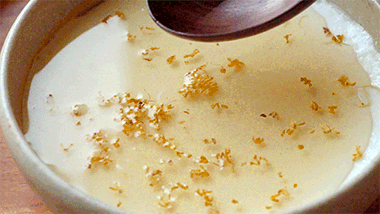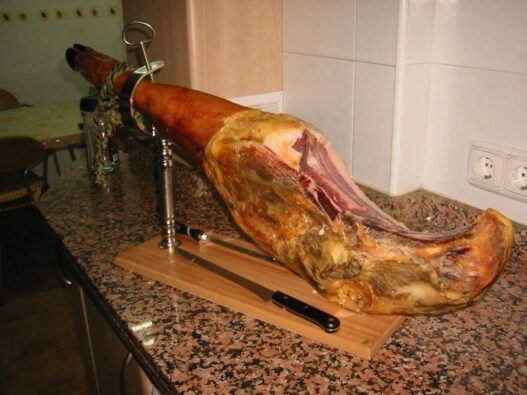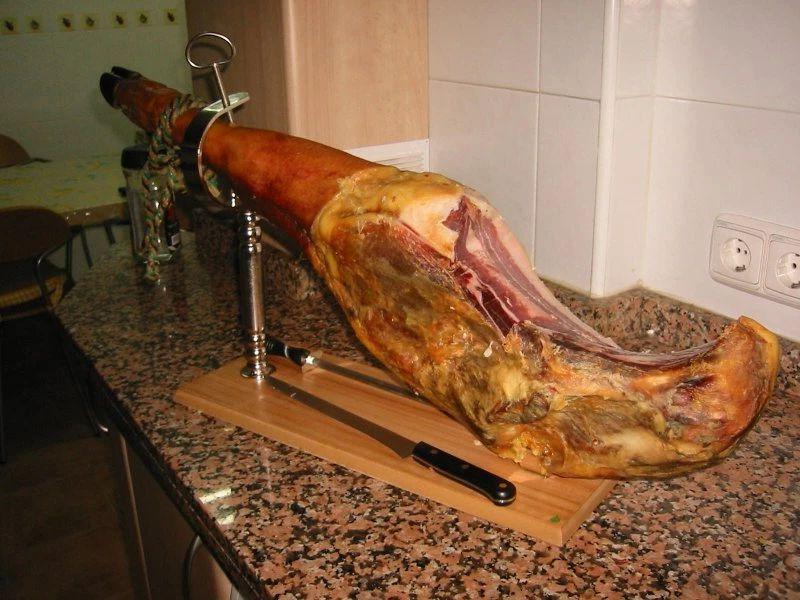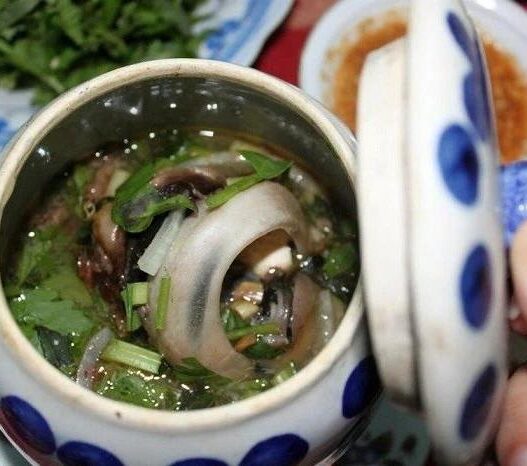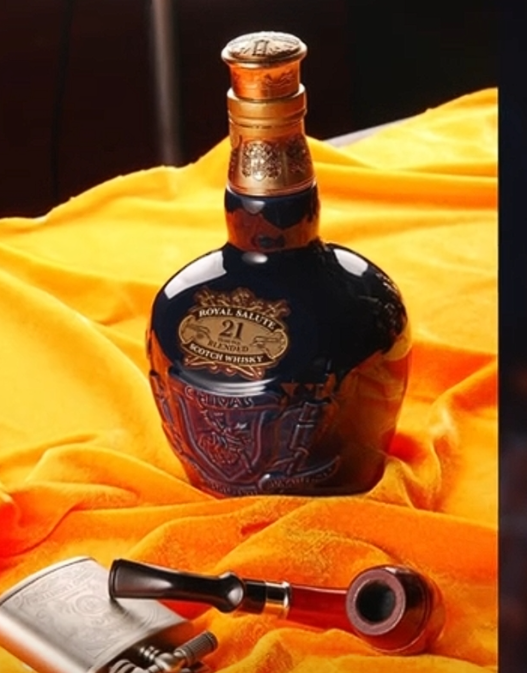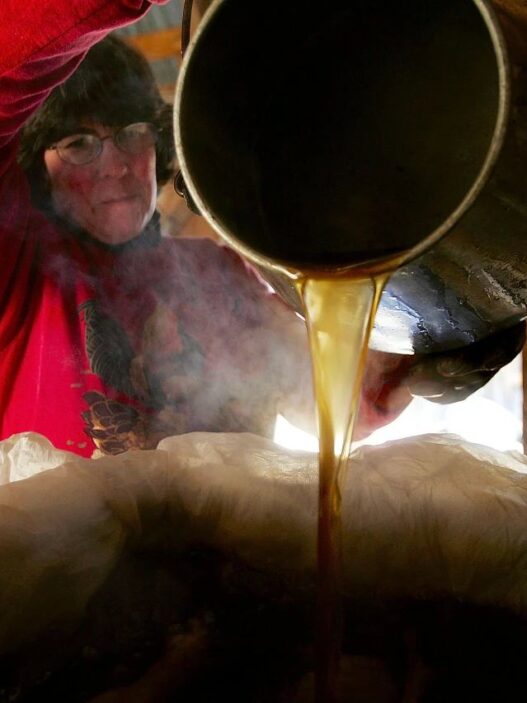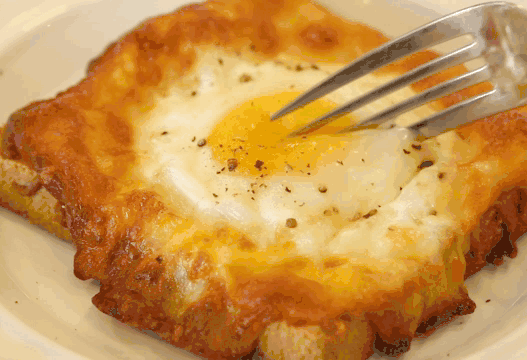Step into any traditional Spanish restaurant, and you’ll immediately notice something peculiar—large, cured Spanish hams hanging from the ceiling. These Jamón Ibérico and Jamón Serrano legs dangle proudly, like edible trophies, adding an authentic touch to the rustic ambiance.
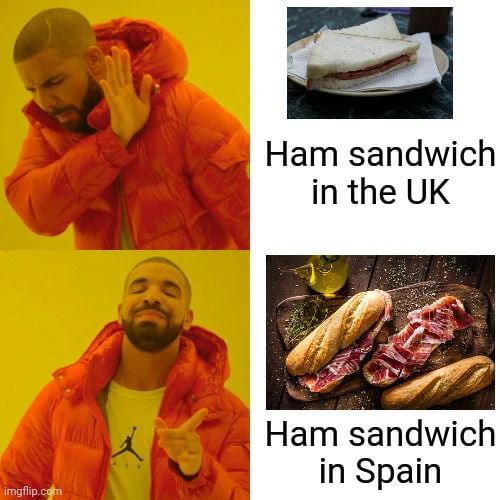
For Spaniards, ham is more than just food—it’s a cultural icon, much like wine in France or pasta in Italy. Their passion for ham runs so deep that it’s nearly impossible to find a Spanish household or eatery without it.
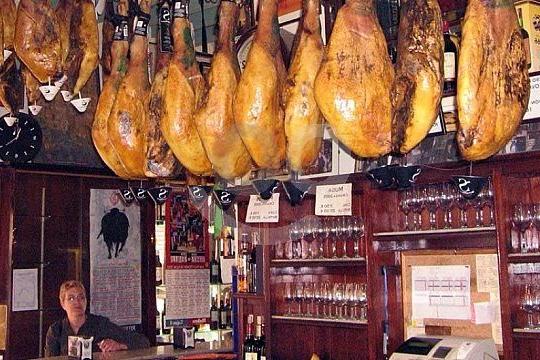
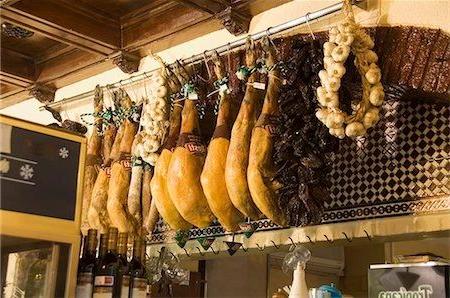
The Color-Coded Secrets of Spanish Ham
If you look closely at those hanging hams, you’ll notice colored tags attached to the ankle of each leg. These tags aren’t just for show—they’re part of Spain’s strict quality control system, making it easy for customers to identify the ham’s origin and quality without asking the staff.
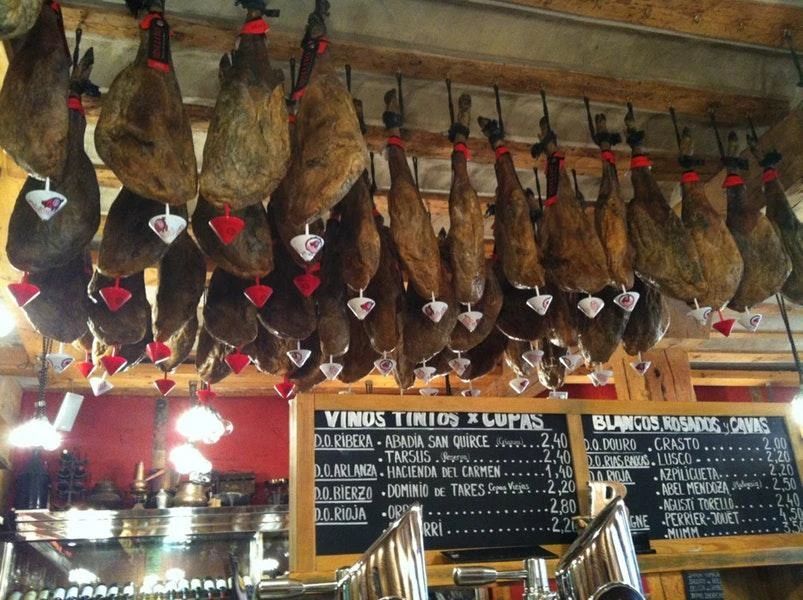
- Black Label: The highest quality, from purebred Iberian pigs fed exclusively on acorns during the “montanera” season.
- Red Label: Crossbred Iberian pigs, also acorn-fed.
- Green Label: Free-range pigs fed on a mixed diet of grass and feed.
- White Label: Standard Iberian ham from grain-fed pigs.
The color system simplifies the buying process and ensures you know exactly what you’re paying for.
From Farm to Fortune: The Making of Premium Ham
The journey of a Spanish ham begins long before it reaches the ceiling of a restaurant. Iberian pigs roam oak forests, known as dehesas, feasting on acorns that give the meat its signature nutty flavor. Once the pigs are slaughtered, the legs are salted for about two weeks, then air-dried in cool, dry conditions.
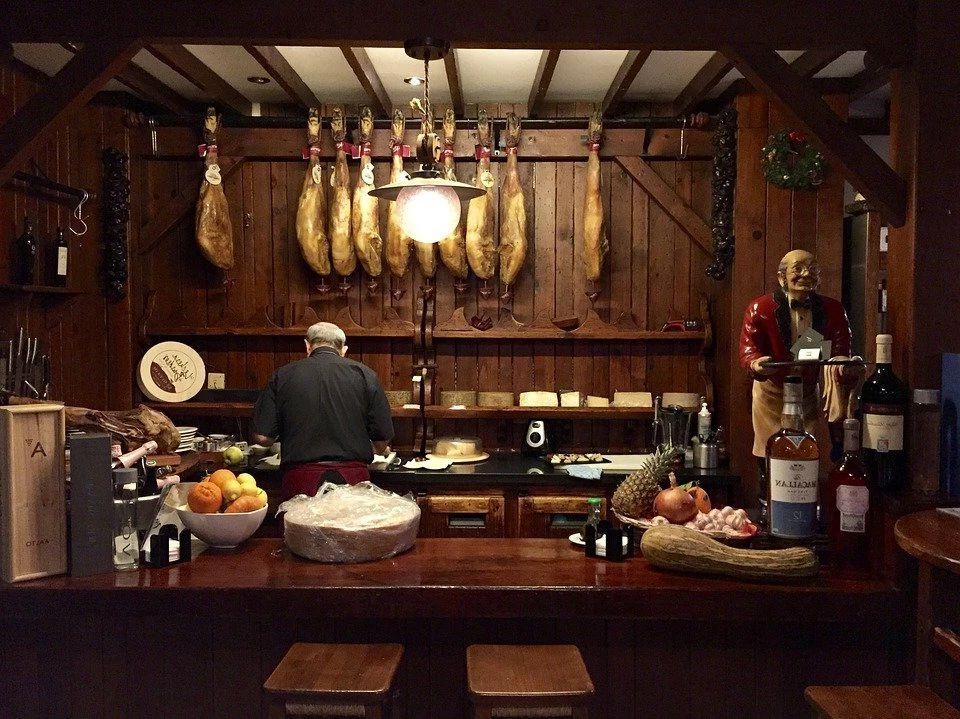
This drying process can take anywhere from 12 to 48 months, depending on the desired quality. During this time, the ham loses moisture, intensifying its flavors. Expert ham curers, known as “maestros jamoneros”, rely on touch, smell, and experience—not precise timelines—to determine when a ham is perfectly aged.
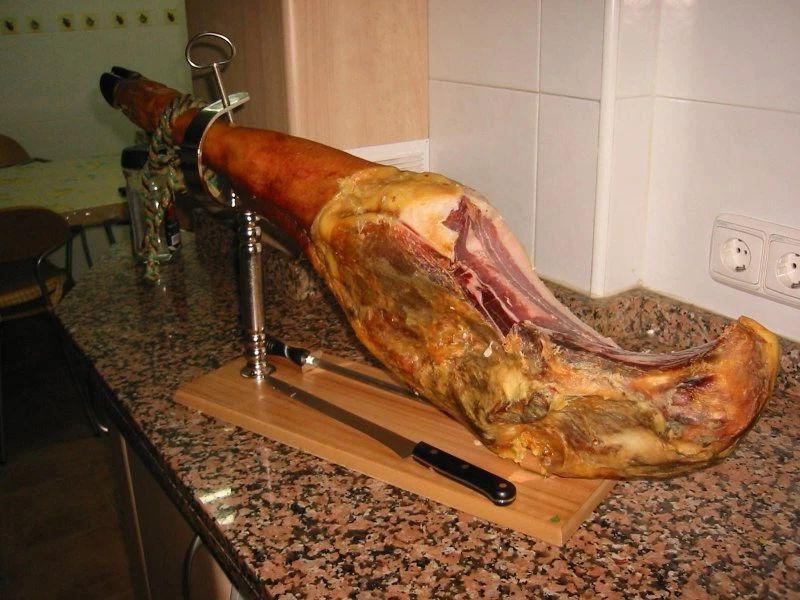
The result? A single leg of Jamón Ibérico de Bellota can fetch up to $3,000, making it one of the world’s most luxurious cured meats.
Why Hang Ham from the Ceiling?
The practice of hanging hams isn’t just about aesthetics—it’s rooted in practicality and history:
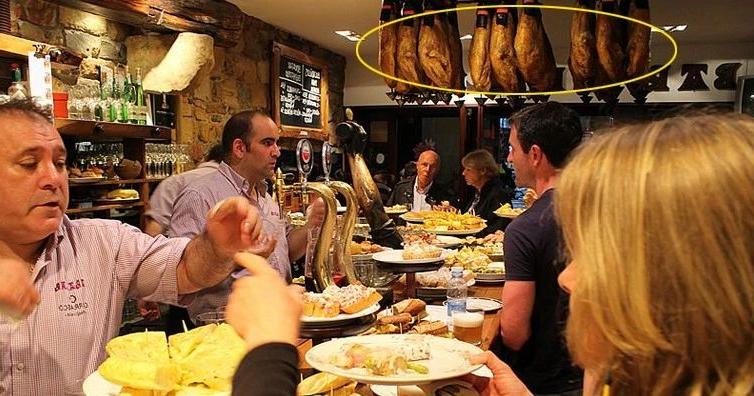
- Better Curing: Hanging allows air to circulate evenly around the ham, ensuring consistent drying and flavor development.
- Quality Display: It’s an instant visual cue for customers. Locals can judge the ham’s quality based on appearance, skipping the need for lengthy discussions.
- Cultural Symbolism: Historically, hanging ham became a sign of religious identity. During the Reconquista, when Christians reclaimed the Iberian Peninsula, pork consumption symbolized Christian faith, as it was forbidden in Islamic and Jewish dietary laws. Hanging hams outside homes and shops became a way to publicly align with Christianity.
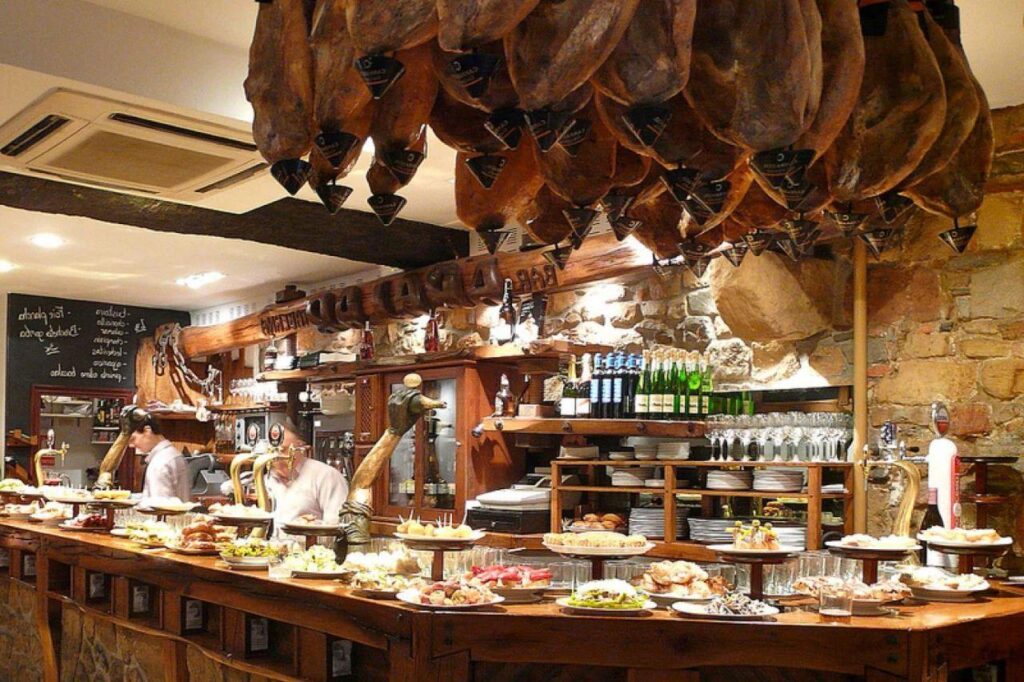
To prevent ham fat from dripping onto diners, Spanish restaurants often place small cone-shaped covers, called “sombreritos”, under each ham leg. It’s a thoughtful touch that blends tradition with modern practicality.
The Art of Eating Spanish Ham
Eating Spanish ham is an experience in itself. No one bites into a whole leg—it’s all about thin, delicate slices carved by hand using a special jamonero (ham holder) and a long, flexible knife.
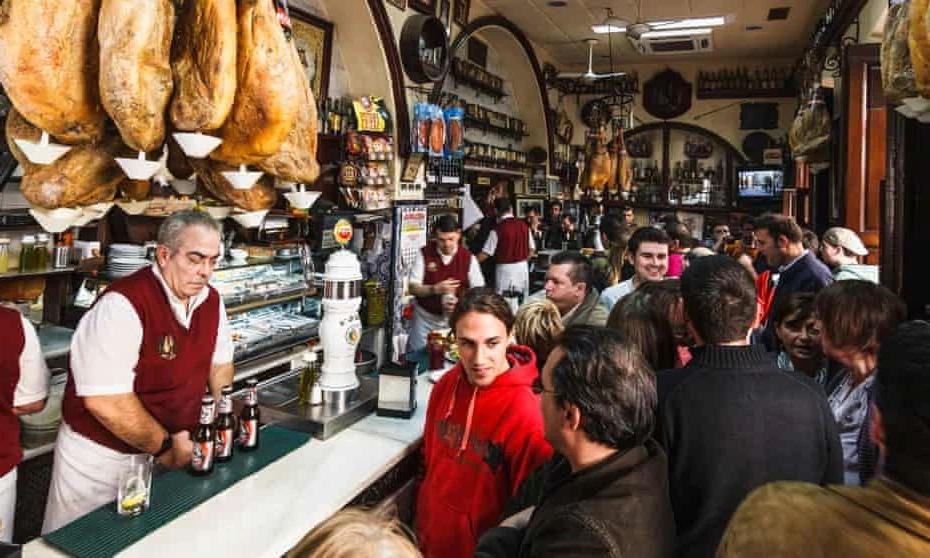
The perfect slice is nearly translucent, with marbled fat that melts in your mouth. Before tasting, Spaniards often inhale the aroma, noting hints of oak, nuts, and even caramel. Each bite starts with a burst of saltiness, followed by a subtle sweetness that lingers on the palate.
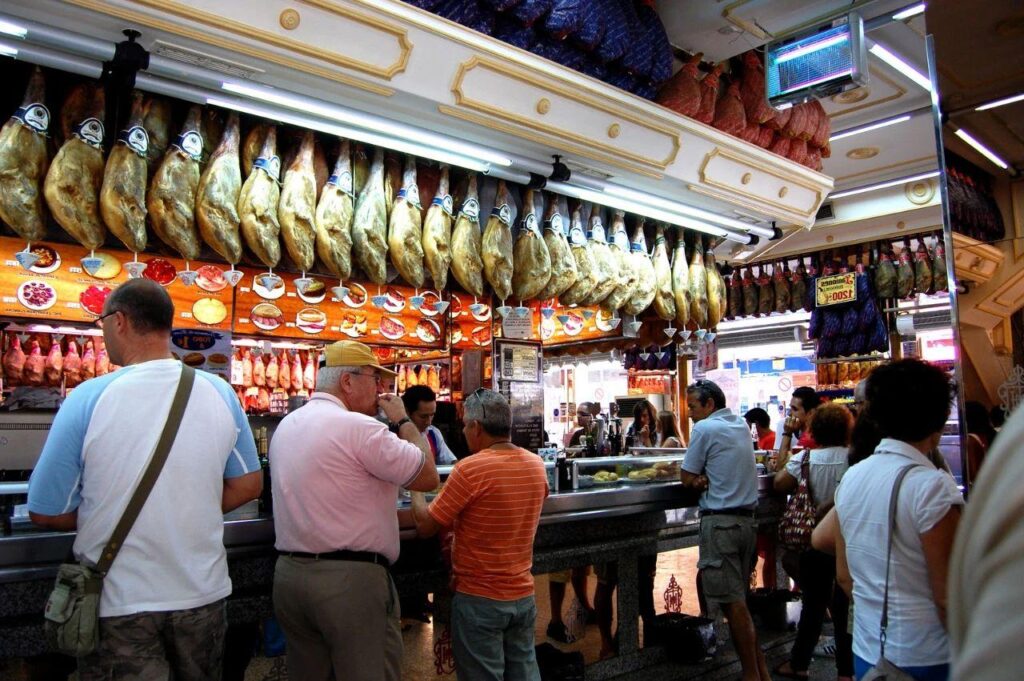
Slow, mindful chewing is key. Rushing through a plate of Jamón Ibérico is like chugging a fine wine—you miss the magic.
Controversy: Is Ham Really Unhealthy?
In 2015, the World Health Organization (WHO) sparked outrage in Spain by claiming that eating 50 grams of processed meat daily could increase cancer risk. Spaniards, proud of their culinary heritage, dismissed the warning as an attack on their beloved ham.
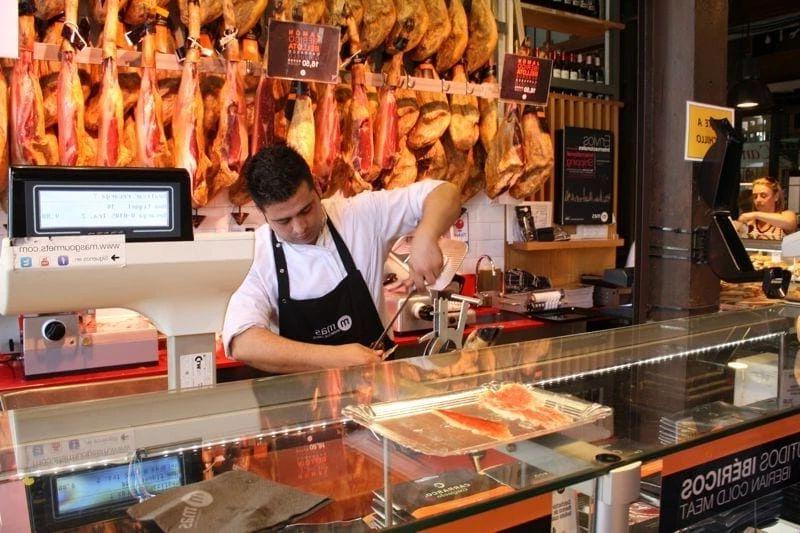
“Jealousy!” many cried. “They envy our ham because they can’t have it!”
Spanish media was flooded with articles defending the health benefits of Iberian ham, citing its high levels of healthy fats, antioxidants, and vitamins. Sales didn’t just hold steady—they actually increased after the WHO’s announcement, proving that no study could shake Spain’s love for its prized delicacy.
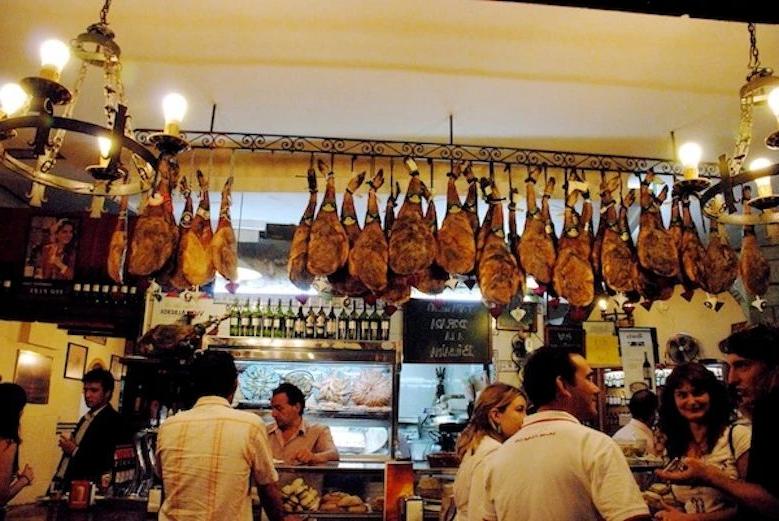
A Legacy Hanging in the Air
Today, the sight of hams hanging from restaurant ceilings is more than just a quirky decoration—it’s a testament to Spain’s culinary history, cultural pride, and unwavering love for Jamón. Each leg represents centuries of tradition, from ancient preservation methods to modern gourmet indulgence.

As a popular Spanish saying goes: “Donde el sol se pone, que me den vino y jamón.” (“Where the sun sets, give me wine and ham.”)
And when the ham runs out, all that’s left is a room full of disappointed Spaniards.





